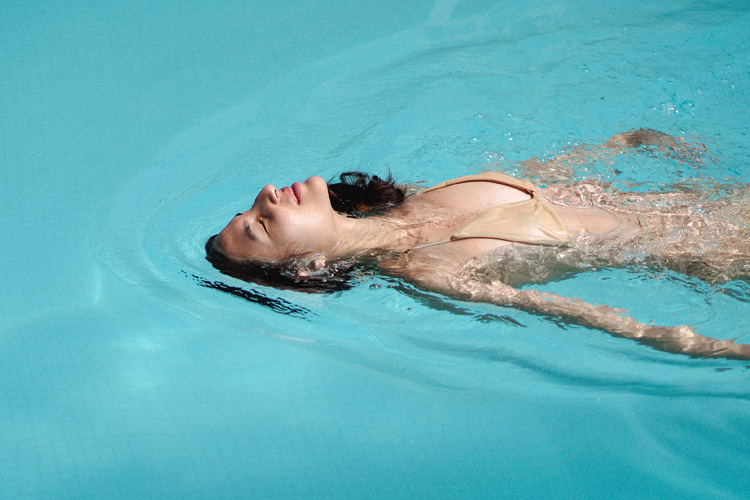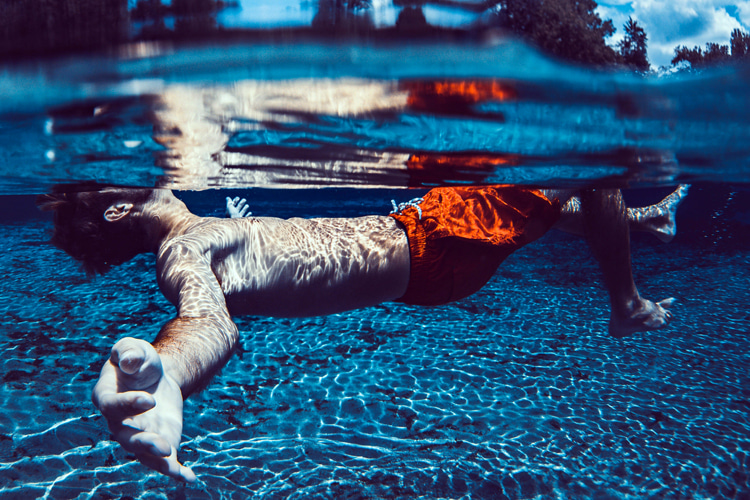Surfers, with their tenacious spirits and hunger for the wave, are all too familiar with the perils of the open water.
Sudden injuries, unexpected wipeouts, debilitating cramps, or sheer exhaustion can strike at any moment, rendering the most seasoned riders temporarily defenseless.
In such instances, knowing how to effectively float on your back can become a literal lifesaver.
Not Just A Survival Skill
Imagine you're out in the ocean, whether it's for a casual swim, surfing, or snorkeling.
Imagine riding the perfect wave when, suddenly, your board slips from beneath you, you fall, and you hurt yourself.
Imagine you get caught inside after a three-wave hold-down.
These scenarios happen all the time and could leave you gasping for breath and struggling against the pull of the ocean.
This is where the ability to float on your back comes in handy.
Floating on your back in the ocean isn't just a survival skill - it's a valuable component of your surfing arsenal.
Not only does it conserve energy and keep your face above water, but it also allows you to maintain a good view of your surroundings, signal for help, or simply regain your composure.
The following tutorial breaks down this essential technique, making it accessible for surfers, swimmers, and water enthusiasts of all ages and skill levels.
Moreover, knowing how to float can make water activities more enjoyable, reduce fear and stress, and increase confidence in the water.

A Step-by-Step Guide to Floating on Your Back
If you've ever seen someone floating on their back in the water, effortlessly bobbing with the waves, you may have marveled at their seeming buoyancy. Is it a magic trick? Some innate skill they were born with?
The truth is, learning to float on your back is a skill that anyone can acquire, and it's far more about relaxation and mindset than about physical strength.
This technique, critical for survival in the ocean, is not only about staying safe. It's also a great way to relax, destress, and truly enjoy the water.
Here is a detailed guide on how to float on your back.
The guide is designed to be easy for beginners, whether you're an adult or a child, and the instructions are simple enough to follow.
You can practice these steps in a pool or any calm body of water.
Step 1: Mental Preparation
Before you start, ensure that you are comfortable in the water, and if you are not, consider taking beginner swimming lessons.
To successfully float, your mindset is as important as your body position.
Relaxation is key. Fear and anxiety can make your muscles tense, which can make floating more difficult.
So, try to stay calm and focused on your breath.
Step 2: Positioning
Now, step into the shallow end of the pool.
Stand with the water level up to your chest or shoulders.
Tilt your head back and look straight up at the sky or ceiling.
Slowly lean back until your ears are submerged in the water, but you can still hear the muffled sounds around you.
The water should cover your ears, and your eyes should be looking straight up.

Step 3: Breathing and Buoyancy
Take a deep breath in and hold it.
The air in your lungs will help with your buoyancy.
As you exhale, you may notice that your body sinks a bit in the water.
Maintain a pattern of slow, relaxed breathing to help maintain buoyancy.
Do not let out all your air at once, and avoid hyperventilating.
Step 4: Arm and Hand Position
Stretch your arms out to your sides, palms down, as though you're trying to make a T with your body.
Your arms can provide stability, much like the outriggers on a canoe.
You can also gently scull the water with your hands (move them back and forth) to help maintain balance and buoyancy.
Step 5: Leg and Feet Position
Extend your legs straight out, keeping them close together.
Point your toes toward the end of the pool.
Some people find it helpful to move their legs in a slow, small bicycle pedal motion to help maintain balance.
Step 6: Adjusting Your Center of Gravity
Your body's center of gravity may differ depending on your body composition.
Adjust your arm or leg positions to see what works best for you.
Some people find it helpful to spread their legs apart or bring their arms closer to their bodies to balance out their center of gravity.
Step 7: Practice
If you sink, don't worry. Stand up, take a moment, and try again. It might take a few tries to get comfortable.
Remember, staying relaxed is essential. The more you practice, the better you'll get at floating.
Supplemental Exercises
The floating ability varies from person to person depending on the weight, lung capacity, body mass, muscle and bone structure.
Nevertheless, you can improve your floating skills with these exercises that can be done at the poolside or even out of the water.
- Balance Training: Exercises such as yoga and tai chi can help improve balance and body awareness, which are critical for floating. Try doing simple poses like the tree pose or warrior pose.
- Breathing Exercises: Controlled breathing is crucial for floating and swimming in general. Practice taking slow, deep breaths, holding for a few seconds, then exhaling slowly. You can do this anywhere and anytime.
- Relaxation Techniques: Floating is all about relaxation. Techniques like progressive guided visualization or muscle relaxation can help you learn to relax your body, which you can then apply to your floating practice.
- Water Treading: Treading water can help you develop the necessary leg strength and endurance to float more efficiently.
- Blowing Bubbles: Practice blowing bubbles underwater in the pool's shallow end. It might sound silly, but this will get you used to having your face submerged and help you control your breath.
- Star Float: Practice the Star Float in shallow water. It's similar to the back float but with arms and legs spread wide. This can help you get a feel for balancing in the water.
- Core Exercises: A strong core can improve your balance and stability in the water. Try planks or yoga poses that target the core.
Floating on your back efficiently and effortlessly can be a lifesaver in the ocean and a doorway to greater aquatic enjoyment.
It takes time, practice, and patience, but the reward is well worth it.
Always ensure safety while swimming, and never surf or swim alone, especially in open waters like the ocean.
